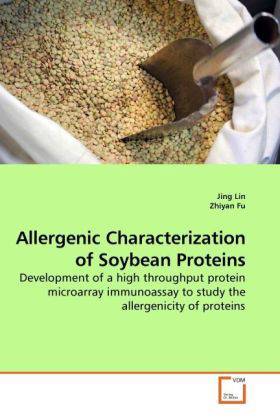
- Afhalen na 1 uur in een winkel met voorraad
- Gratis thuislevering in België vanaf € 30
- Ruim aanbod met 7 miljoen producten
- Afhalen na 1 uur in een winkel met voorraad
- Gratis thuislevering in België vanaf € 30
- Ruim aanbod met 7 miljoen producten
Zoeken
Omschrijving
The aim of the research presented in the book was to relate the structure of soybean 2 S albumins to their allergenicity. Using the methylotrophic yeast Pichia pastoris, two recombinant soybean 2 S albumins (rAL1 and rAL3) were produced as secreted proteins. Biophysical results indicated that the recombinant proteins were correctly folded and exhibited similar structures to those of the purified native soybean 2 S albumin (nAL3). Similarly to many plant allergens, these 2 S albumins were highly stable to pepsin digestion as well as heat and chemical treatment. In order to investigate whether the soybean 2 S albumins possess other biological activities that might have contributed to their allergenicity, several assays were carried out. The 2 S albumins from soybean appeared to affect the culture absorbance of two out of 10 species of fungi tested. Antimitotic studies have shown that nAL3 could also weakly inhibit cell division when microinjected into human HeLa cells. The ability of the soybean 2 S albumins to be recognized by IgEs from 23 European patients clinically characterized as allergic to soybean was determined using a novel high throughput protein microarray technique.
Specificaties
Betrokkenen
- Auteur(s):
- Uitgeverij:
Inhoud
- Aantal bladzijden:
- 244
- Taal:
- Engels
Eigenschappen
- Productcode (EAN):
- 9783639228823
- Uitvoering:
- Paperback
- Afmetingen:
- 220

Alleen bij Standaard Boekhandel
+ 155 punten op je klantenkaart van Standaard Boekhandel
Beoordelingen
We publiceren alleen reviews die voldoen aan de voorwaarden voor reviews. Bekijk onze voorwaarden voor reviews.








